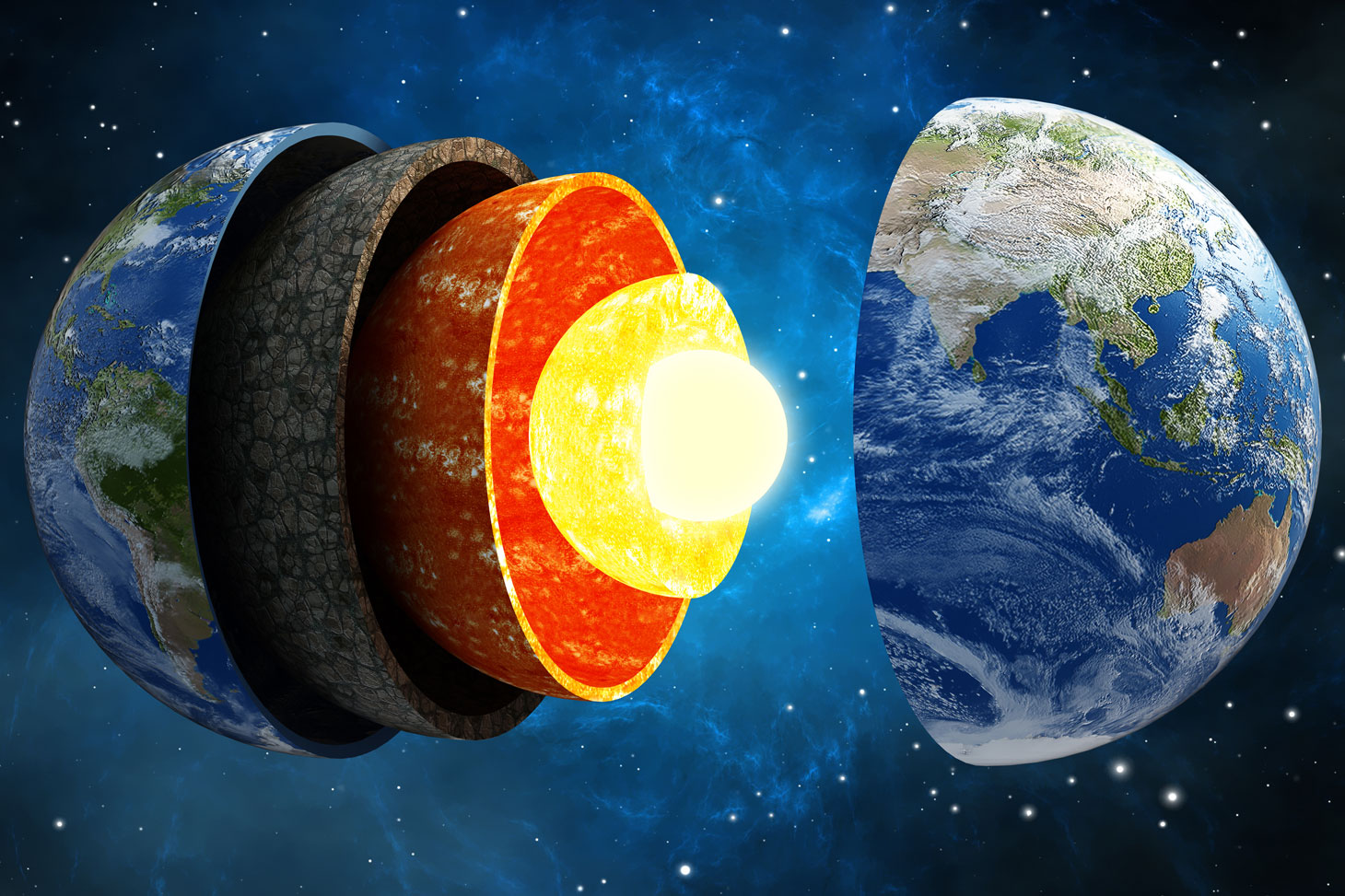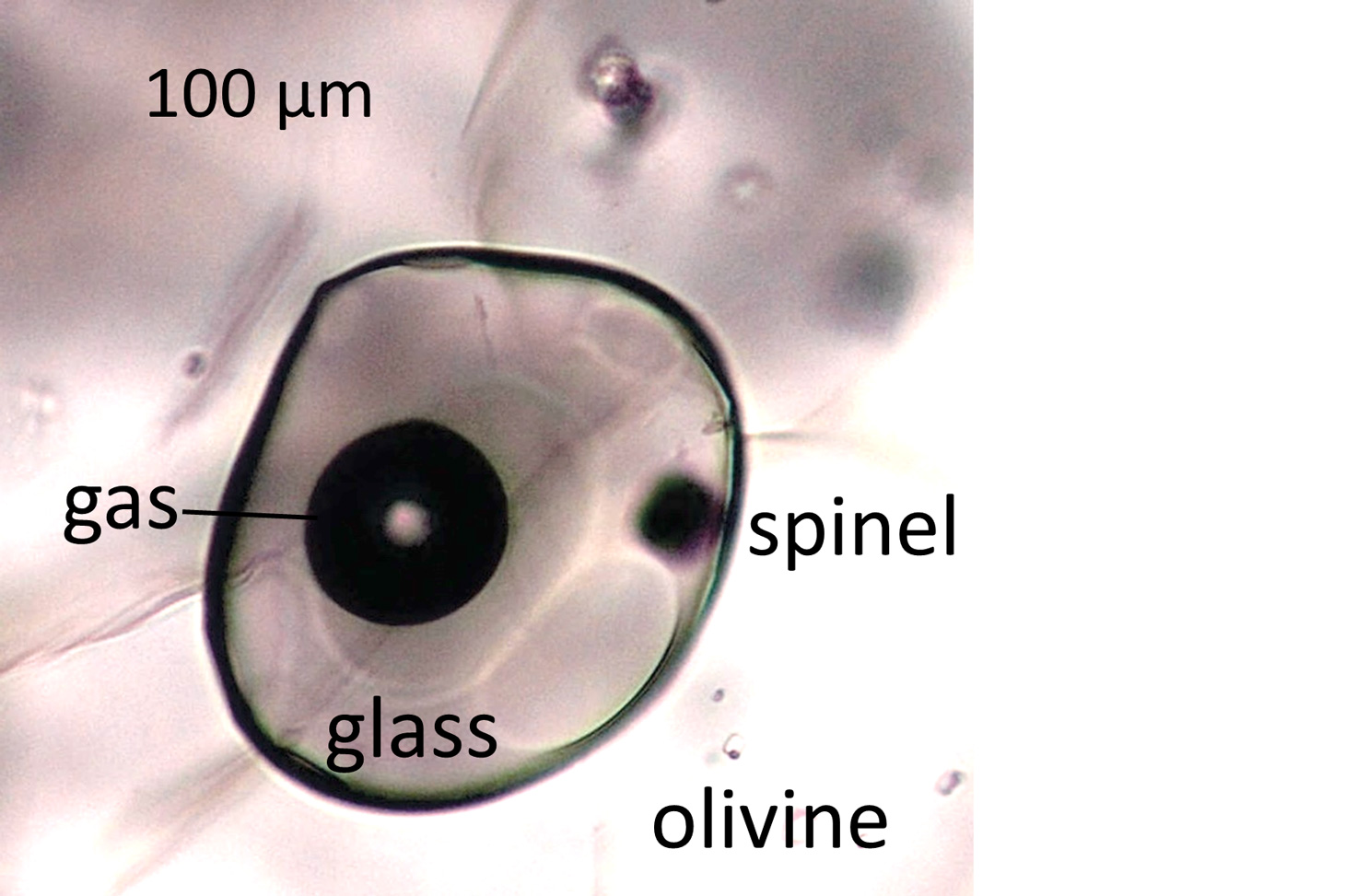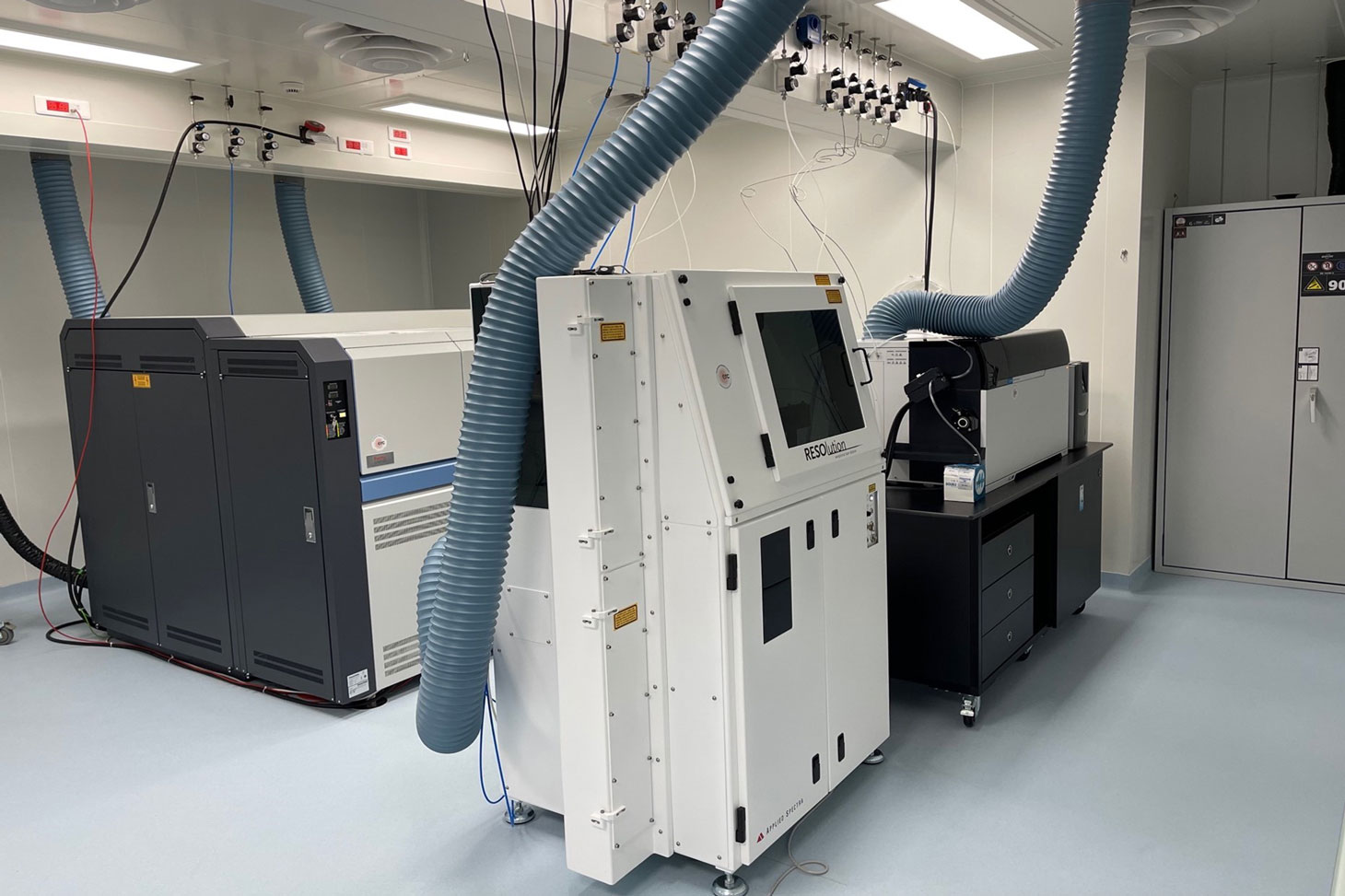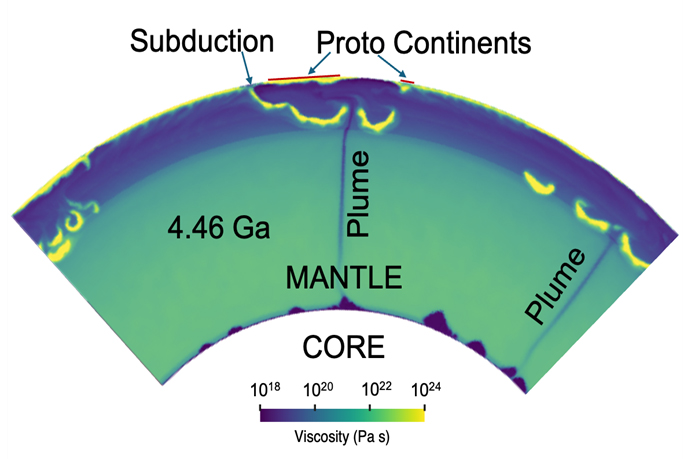Geochemical analyses of magma reveal dynamic activity in the Earth's lithosphere 4 billion years ago
Research
On April 25, 2025

Scientists from the University of Grenoble Alpes, using a unique geochemical analysis platform at the Grenoble Institute of Earth Sciences (a collaboration between UGA, CNRS, USMB, IRD, and Gustave Eiffel University), have made a significant discovery that challenges previous theories. Their research reveals that dynamic plate tectonic activity occurred on Earth 4 billion years ago. This finding is based on geochemical analyses of magmatic inclusions and is supported by numerical modeling conducted at the German Research Center for Geosciences. The results of this study will be published in the journal Nature Communications on April 25, 2025.
Vitrified magmatic inclusions (Figure 1) preserved in olivine crystals that formed 3.3 billion years ago have been analyzed using in situ techniques, thanks to innovative analytical developments at the ISTerre analytical platform (IMAP) (1) (figure 2).
The results indicate that the magma trapped in these olivine crystals originated from the partial melting of a region in the Earth's mantle that formed over 4 billion years ago. Furthermore, these analyses reveal that this mantle source underwent previously unidentified processes of continental crust extraction.
In summary, the new results from this study provide insights into the geological processes that shaped Earth's evolution more than 4 billion years ago. This discovery, which focuses on the geochemical analyses of magmatic inclusions conducted by ISTerre scientists, was complemented by numerical models (Figure 3) developed at the German Research Centre for Geosciences (GFZ). These models suggest that the geochemical results obtained from a specific geological site in South Africa are representative of the processes occurring on Earth during the Hadean period (4.5 to 4.0 billion years ago) and indicate that the volume of continental crust present on Earth's surface at that time was quite similar to the current volume.
The new findings demonstrate that lithospheric activity during the Hadean period was dynamic. This interpretation is significant because a considerable portion of the scientific community believes that lithospheric dynamics during the Hadean were largely static, characterized mainly by meteorite bombardments and sporadic volcanic activity, with horizontal plate tectonics as we know it today being inactive.
In contrast, the new results show that lithospheric activity during the Hadean involved dynamic processes, including mantle plumes—upwellings of hot material from the mantle/core boundary—which, upon reaching Earth's surface, generated horizontal tectonic movements that led to subduction. It was during this subduction of oceanic plates in the Hadean that the first continents began to form. This type of dynamic activity also appears to be more conducive to the emergence of life on Earth than the previously imagined static configuration for the Hadean.
This research was made possible by a grant from the European Research Council (ERC) as part of the Synergy 85655 MEET (Monitoring Earth Evolution through Time) project, led by Alexander V. Sobolev (ISTerre, UGA, France), Stephan V. Sobolev (GFZ, Germany), and John W. Valley (University of Wisconsin–Madison, USA)..


To find out in just a few minutes why the IMAP platform is unique in the world, watch the video in the UGA Expelab series devoted to the MEET scientific project.
The results indicate that the magma trapped in these olivine crystals originated from the partial melting of a region in the Earth's mantle that formed over 4 billion years ago. Furthermore, these analyses reveal that this mantle source underwent previously unidentified processes of continental crust extraction.
In summary, the new results from this study provide insights into the geological processes that shaped Earth's evolution more than 4 billion years ago. This discovery, which focuses on the geochemical analyses of magmatic inclusions conducted by ISTerre scientists, was complemented by numerical models (Figure 3) developed at the German Research Centre for Geosciences (GFZ). These models suggest that the geochemical results obtained from a specific geological site in South Africa are representative of the processes occurring on Earth during the Hadean period (4.5 to 4.0 billion years ago) and indicate that the volume of continental crust present on Earth's surface at that time was quite similar to the current volume.
The new findings demonstrate that lithospheric activity during the Hadean period was dynamic. This interpretation is significant because a considerable portion of the scientific community believes that lithospheric dynamics during the Hadean were largely static, characterized mainly by meteorite bombardments and sporadic volcanic activity, with horizontal plate tectonics as we know it today being inactive.
In contrast, the new results show that lithospheric activity during the Hadean involved dynamic processes, including mantle plumes—upwellings of hot material from the mantle/core boundary—which, upon reaching Earth's surface, generated horizontal tectonic movements that led to subduction. It was during this subduction of oceanic plates in the Hadean that the first continents began to form. This type of dynamic activity also appears to be more conducive to the emergence of life on Earth than the previously imagined static configuration for the Hadean.
This research was made possible by a grant from the European Research Council (ERC) as part of the Synergy 85655 MEET (Monitoring Earth Evolution through Time) project, led by Alexander V. Sobolev (ISTerre, UGA, France), Stephan V. Sobolev (GFZ, Germany), and John W. Valley (University of Wisconsin–Madison, USA)..
Figure 1

Vitrified magmatic inclusions preserved in olivine crystals formed 3.3 billion years ago were analyzed for their strontium (Sr) isotopic composition as well as for their trace element composition (concentrations ≤ ppm).
Figure 2

These analyses were carried out using in situ approaches thanks to innovative analytical developments, unique in the world, carried out on the ISTerre analytical platform (IMAP).
Figure 3

Snapshot of Earth's Cross-Section in a Geodynamic Model from the Early Hadean Period (4.46 Billion Years Ago). This model visualizes Earth's internal structure, with colors representing viscosity levels: yellow indicates cold, highly viscous lithosphere and subducted slabs, while blue signifies hot, low-viscosity mantle plumes. The earliest continental formations are shown in red.
(1) The IMAP platform has been co-financed by the CNRS, the European Research Council via an ERC Synergy grant and the Auvergne-Rhône-Alpes Region. It is part of the “Electron microscopy and microanalysis” network within the French Geochemical & Experimental Network (RéGEF).
Discover the MEET scientific project!
To find out in just a few minutes why the IMAP platform is unique in the world, watch the video in the UGA Expelab series devoted to the MEET scientific project.
Published on April 25, 2025
Updated on April 28, 2025
Updated on April 28, 2025
Bibliography
A. Vezinet, A. V. Chugunov, A. V. Sobolev, C. Jain, S. V. Sobolev, V. G. Batanova, E. V. Asafov, A. N. Koshlyakova, N. T. Arndt, L. V. Danyushevsky, and J. W. Valley, Nature Communications 2025.
DOI: https://doi.org/10.1038/s41467-025-59024-6
DOI: https://doi.org/10.1038/s41467-025-59024-6
Scientific contacts
- Adrien Vezinet
1er auteur, postdoctorant UGA - ISTerre - Alexander Sobolev
Professeur UGA - ISTerre - Stephan Sobolev
GFZ, Germany

